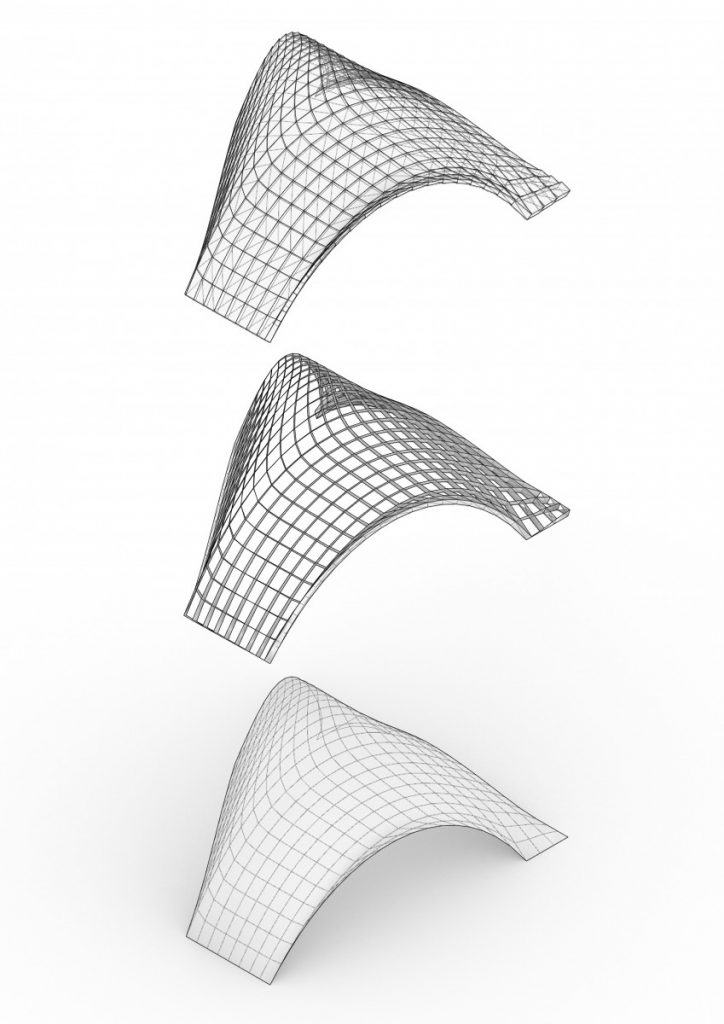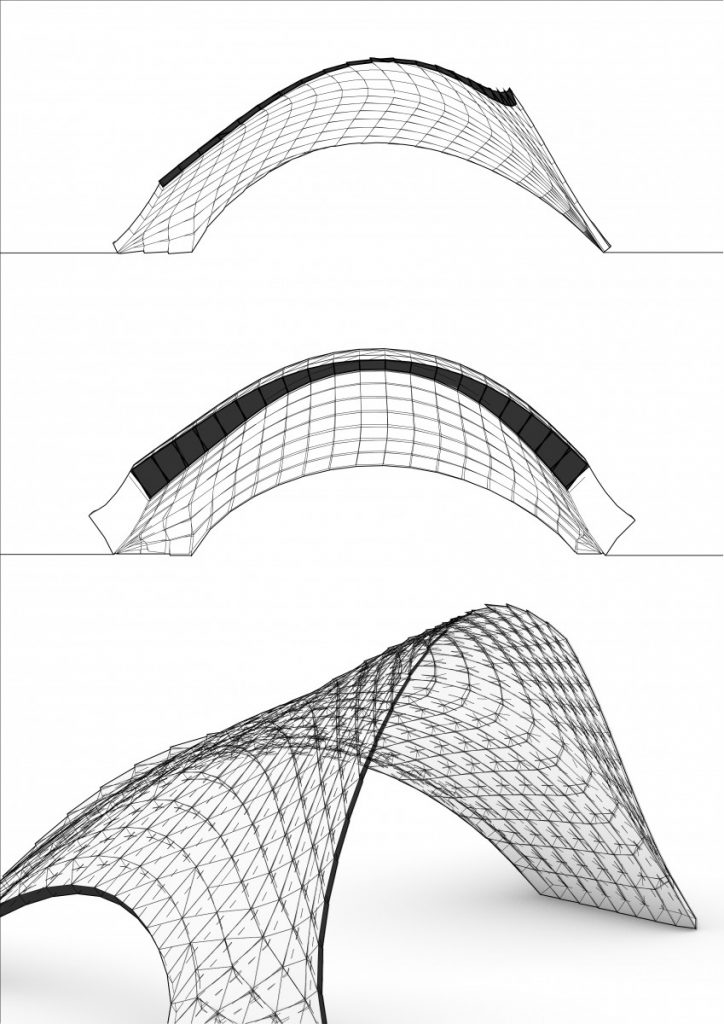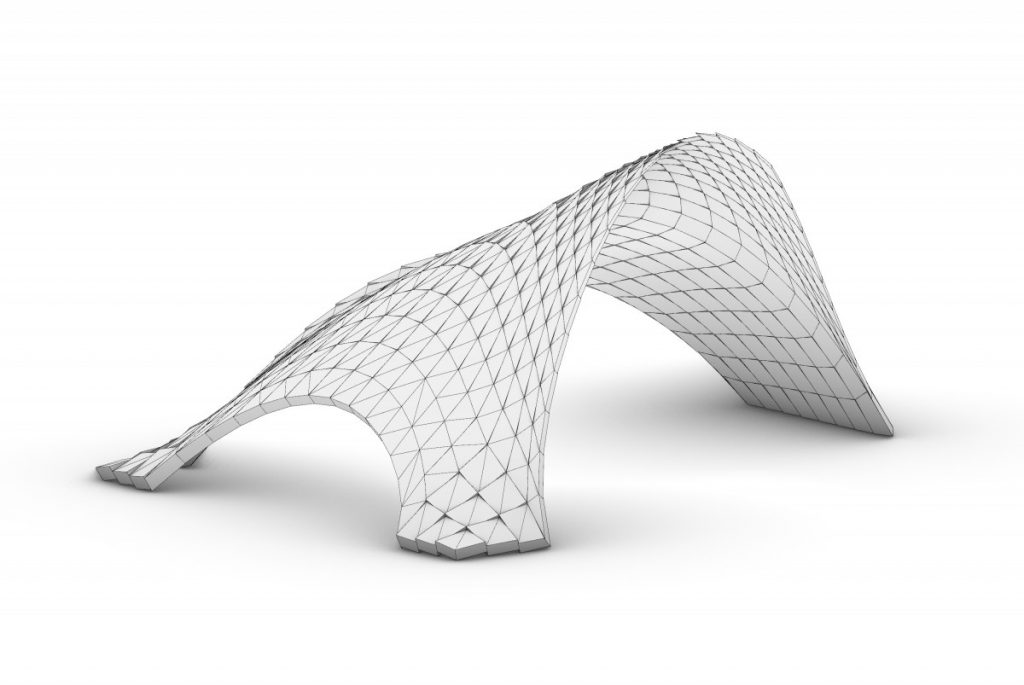Further development of the thesis project – testing 3 supports supported dome structure worked. Although the side elements tend to fall away and do not have any structural performance in the whole model.
Having a medial spine helps during the assembly process and once it is assembled all other elements can be easily attached to each other.
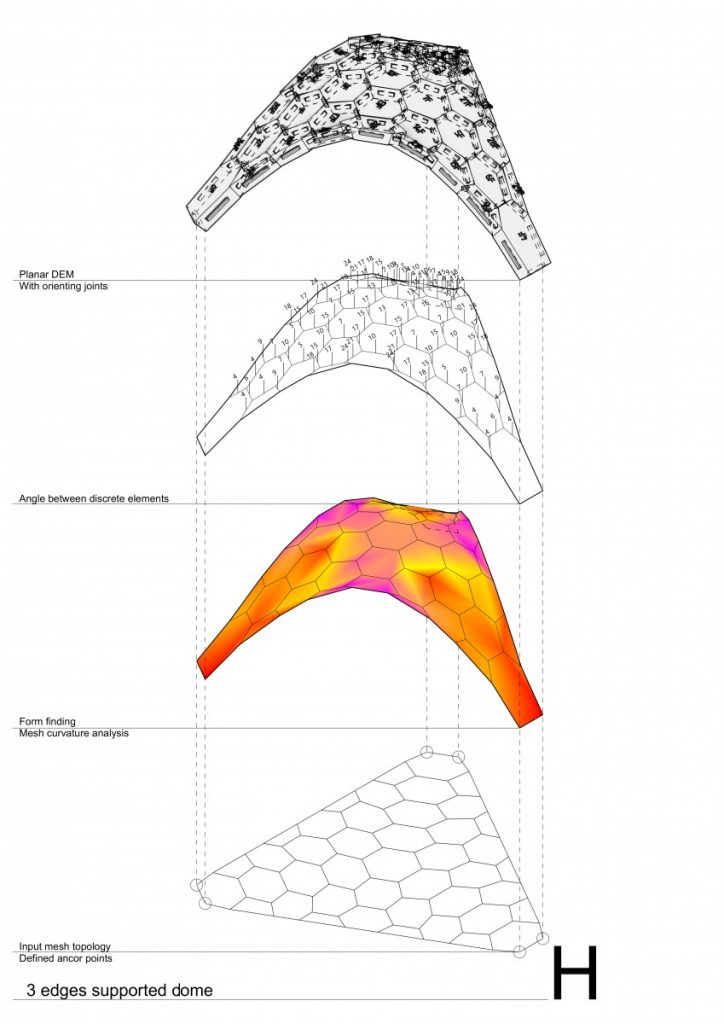
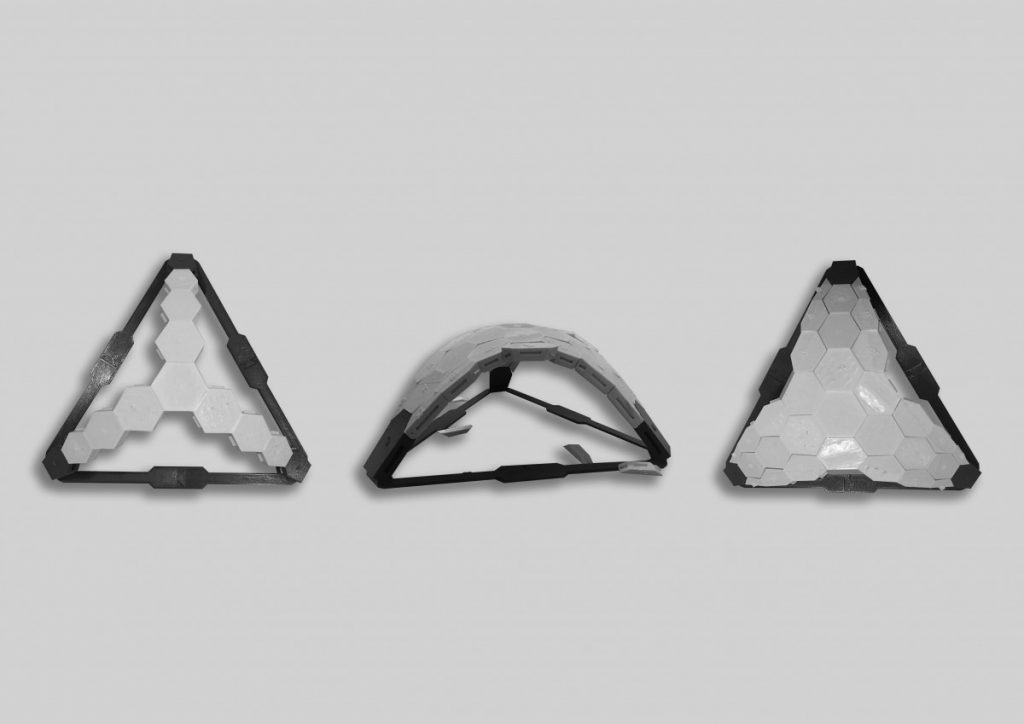
Some additional information according to the tessellation of symmetrical and asymmetrical shell structures could be found in the diagrams below.
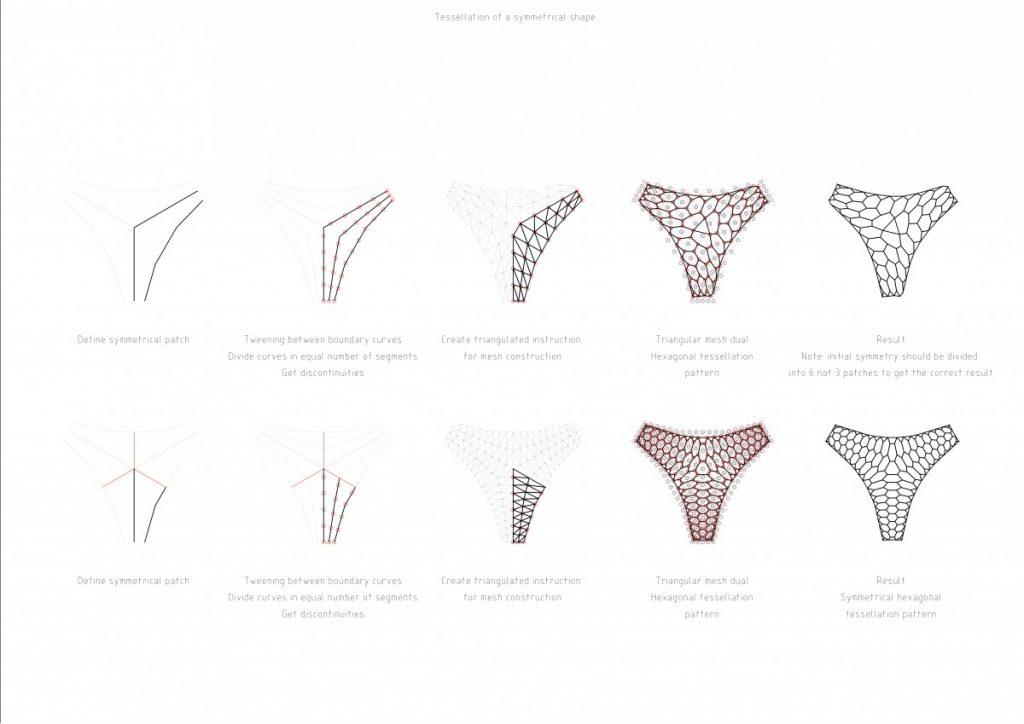
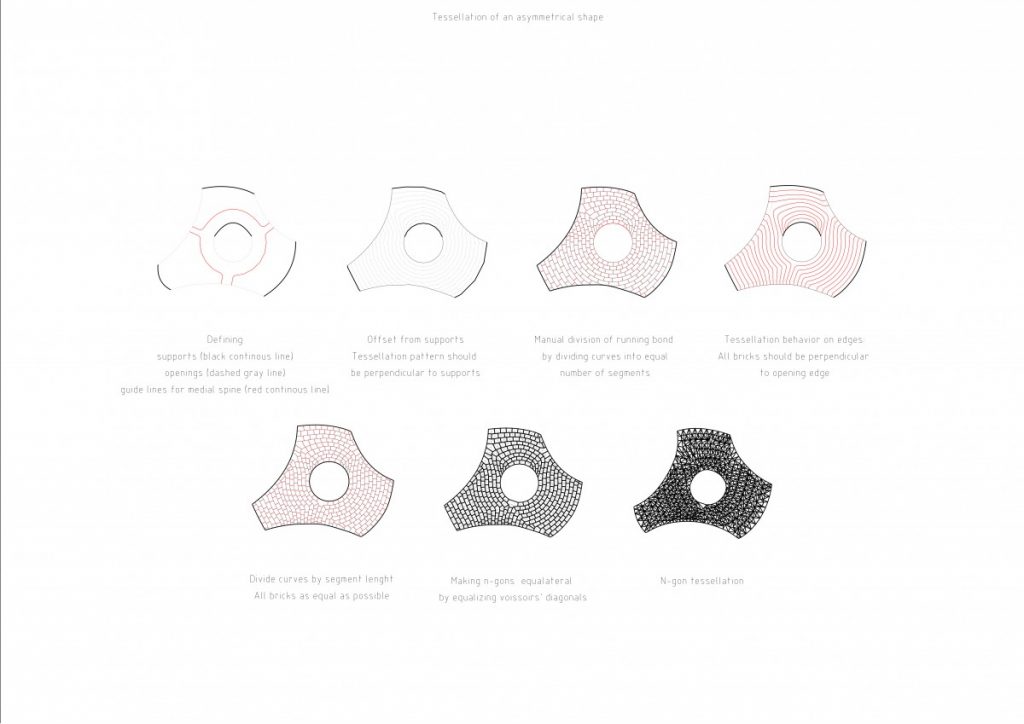
While working with symmetry gives an opportunity to automate the process in Grasshopper, working with an asymmetrical shapes requires some background knowledge, starting from medial spine to understanding of a force flow in the discrete element shell geometry to size of each voussoir and as for now is drawn manually. Furthermore, it is impossible to stick with a same number of vertexes for each detail, so the whole tessellation becomes an n-gon pattern.
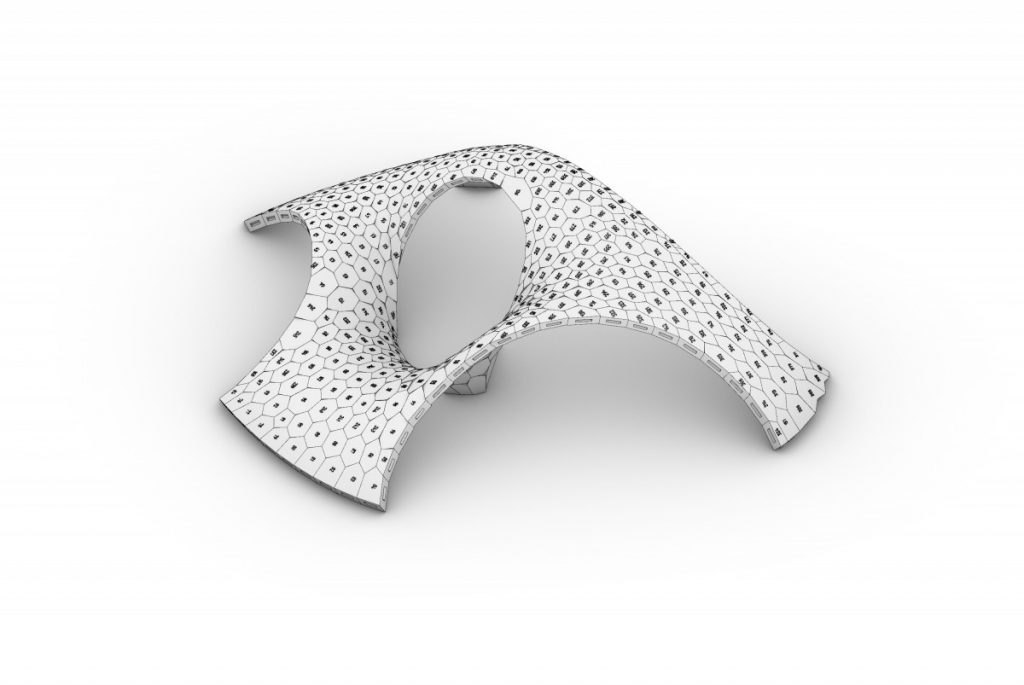
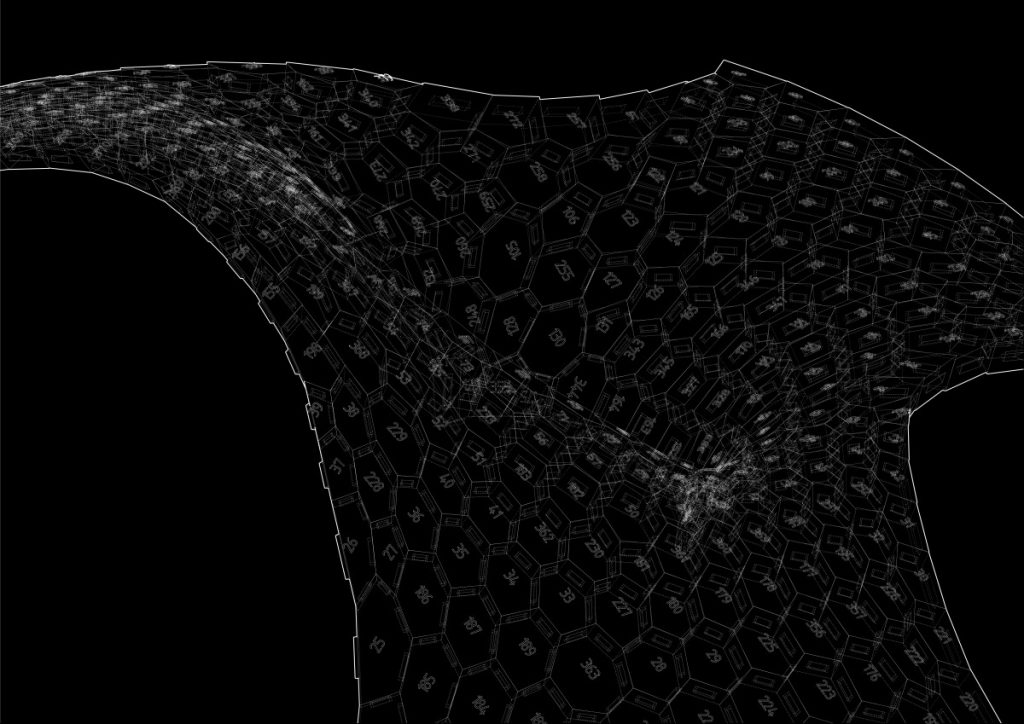

And finally first experiments with different thickness of a shell from DE.
